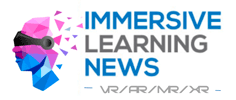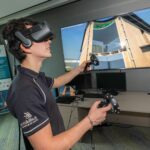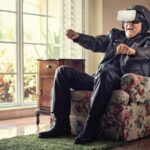This week, Dana Williams and her team at American High School launched the first global virtual reality high school — and it’s pretty cool.
It all started one day when Dana Williams reached out to us (VictoryXR) to take a tour of our online VR academy. Now note, the VictoryXR Academy educates groups of students in VR with live teachers, but it is not a school. As our curriculum specialist, Rene Gadelha will tell you, we offer supplemental learning, not for-credit classes.
But with Dana Williams and American High School, the world changed. Those who have read the book or watched the movie, Ready Player One, get the drill. Students put on a virtual reality headset and enter a 3D world with others where they can interact, play, learn, discuss and — at least in short bursts — live.
There’s a lot of talk about the Metaverse, and in the truest sense of the concept, the school launched by Ms. Williams and her team, realizes that vision. Here’s why:
First, students are attending classes from more than one country. The first classes include students from both the United States and the Caribbean.
Second, students experience the VR American High School as an avatar they create.
Third, students are in a live, synchronous experience with a live teacher and a group of classmates.
Fourth, all lessons are recorded and saved into a content library in full, spatial 3D. What that means is that a student can come back later and revisit the full class, as it happened. More than a video of a class, a student may walk around the class, experience the learning objects and even start and stop the class as needed.
Fifth, students can meet after school on the campus with the chess club on the chess club space, or in study groups in the student lounge. The campus is a real campus, a place for classes to be held and students to congregate.
Sixth, this learning classroom replicates an atom-based classroom in the best ways. When I describe this to people, they frequently ask what the students are ‘watching’, as if this is a video or imagery to be consumed visually. For those who have not been inside, it is sometimes difficult to explain. The analogy I use is that of the Grand Canyon. Your aunt can bring you a postcard of the Grand Canyonand it’s beautiful, but when you are actually standing on the south rim, beholding all it’s glory it is almost a religious experience. Students who are in a classroom are able to learn in ways that are similar to the real classroom and in other ways, much better, more experientially profound. For example:
- When learning anatomy, a teacher can reach into the chest cavity of a cadaver and pull out a human heart and hand it to students standing around the table. The student from the Caribbean will hold it, examine it and then hand it to the student standing just to the right who happens to be — physically- in Denver, Colorado.
- When students first enter the class, they see each other, verbally greet each other and just like the real world, can fist bump each other and haptically feel it. Stop and consider that for a moment. Two students, half a hemisphere apart, can fist bump and feel it in this metaverse classroom.
- When studying astronomy, students do what students do in the physical world — they travel to a planetarium (at least in school districts that still have a field trip budget). The students in the VR version of American High School do the same, but unlike their earthbound counterparts, they leave the planetarium, enter the transporter and ‘beam up’ to the starship. From there, they don a space suit and go on a space walk to see celestial bodies up close.
Geographic Agnosticism
With the need for greater educational equity, perhaps the two greatest challenges are income and geography. While income is partly addressed with this VR approach (dramatically driving down the cost of educating students), the most impressive improvement comes from making geography irrelevant.
Think about magnet schools. Philadelphia may have an amazing magnet school for students who want to study science and technology, but if you don’t live in Philadelphia, it is not an option. Students who live in rural Pennsylvania or rural Mexico are limited to the school nearby — whether or not it satisfies the unique learning need each student has.
In a school deployed through virtual reality, students may find the learning location and curriculum that best suits their need, regardless of their physical location. If a student is destined to be the world’s greatest computer chip architect and wants to attend a school with a heavy emphasis on computer engineering, this is now possible even if they live in Bora Bora… or New York. Relationships with like-minded people will develop and suddenly, someone who lives halfway around the globe will become a friend, not a stranger in a faraway land.
Quelle:


